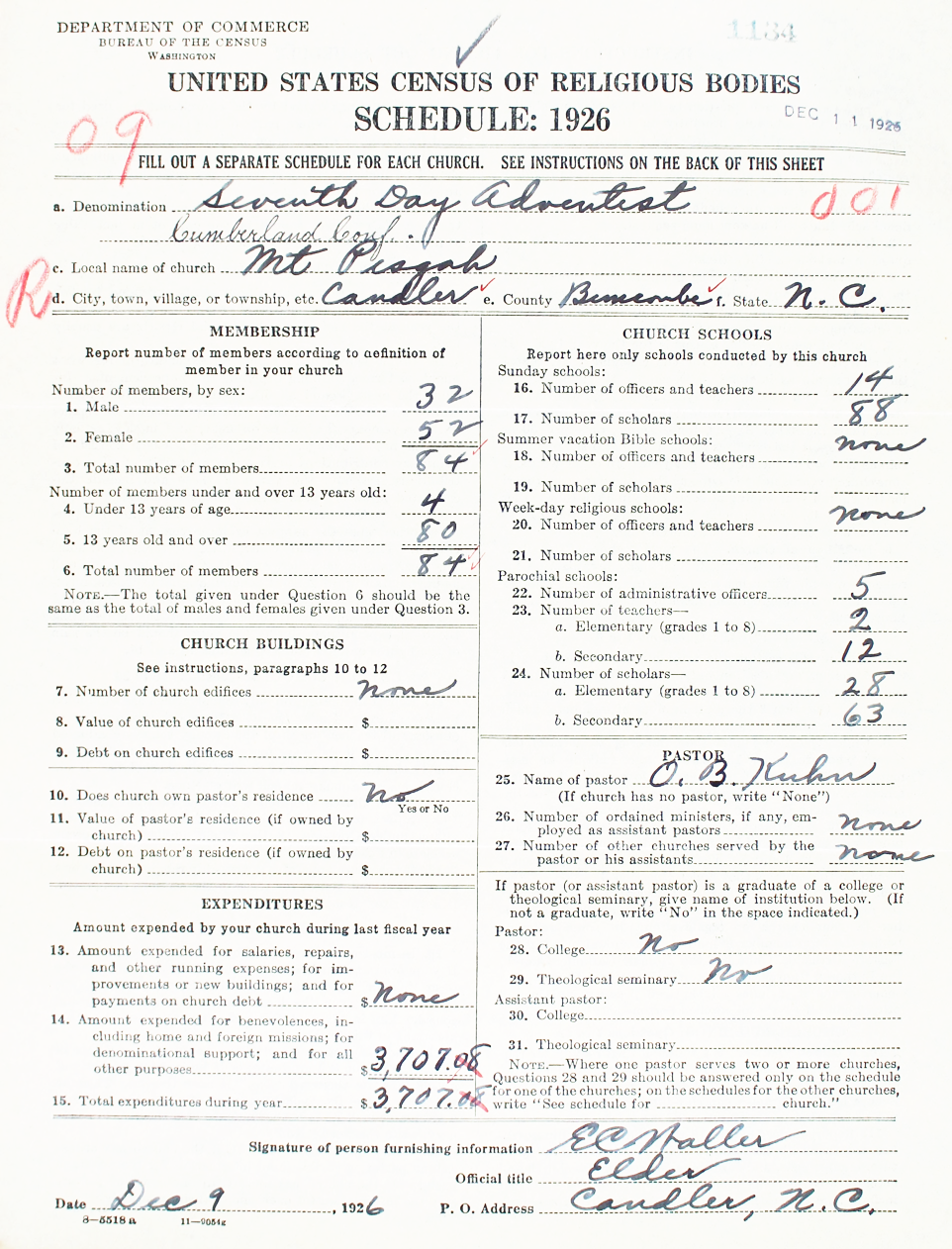RRCHNM to Digitize the 1926 Census of Religious Bodies
The Roy Rosenzweig Center for History and New Media is pleased to announce that it has received a three-year grant from the National Endowment for the Humanities to support American Religious Ecologies. The generous funding comes from the Humanities Collections and Reference Resources program within the NEH’s Division of Preservation and Access.
American Religious Ecologies will digitize the 1926 Census of Religious Bodies. Every ten years from 1906 to 1946, the U.S. Census Bureau surveyed congregations, synagogues, and other religious groups in a census that supplemented the better known population census. While the Census published summary reports from that data, the forms (or schedules) filled out by each congregation have not been widely used. Only the schedules from the 1926 Census survive, and those are located in a collection at the National Archives and Records Administration in Washington, DC, which has been cataloged but not inventoried.
This project will photograph and make available approximately 232,000 schedules, like the one shown below. These schedules contain a wealth of information about each congregation, including its membership by age and sex, its expenditures on buildings and missions, its minister’s name and whether he or she had gone to seminary, and its denominational affiliation, which the Census Bureau cataloged into 213 different groups. Just as important, the schedules include the location of the congregations—almost always by county and city or town and in many cases the street address as well.

Figure 1. This schedule was filled out by a Seventh Day Adventist congregation in Candler, North Carolina. Candler was an unincorporated town and was too small to be worth mentioning in the published population census of 1930, yet the Census of Religious Bodies was able to count its 84 Adventists in 1926. Taken from Box 3, Schedules of the Census of Religious Bodies, 1926–1928, National Archives Identifier 2791163, National Archives and Records Administration, Washington, DC.
This project will associate each of the records with spatial data, linking each congregation to its state and county, and in most cases with a town or city as well. Researchers will be able to browse the schedules by denomination and place in a way that they could never feasibly do in the archives. The project team will also begin to transcribe the data contained in these records, make the rest available for crowdsourced transcription, and create maps of religion at the national and local levels. The result will be a detailed and comprehensive spatial dataset for American religion, useable by scholars in history and religious studies, by local historians, and by the public.
We envision the final project being used to look up individual congregations, to study the history of a town or county, and to better understand the religious groups that the Census Bureau surveyed. But we also think that it will provide a new angle of vision onto some of the perennial questions in American religious history. For instance, observers of American religion have often noted its pluralism, and have described how different groups often competed, sometimes collaborated, and usually coexisted in the same places. But while it is straightforward to assert, for example, that in a large city like New York or Los Angeles there were many religious groups, what about in small towns or sparsely populated places? What were the range of congregations available in, for example, the small unincorporated town of Candler, NC? Did those congregations come from similar or different denominations? We hope to turn the 1926 Census into a dataset that can provide some empirical evidence for significant questions such as these.
The core team at RRCHNM will include Ken Albers, Kim Nguyen, Jim Safley, and Greta Swain, as well as undergraduate research assistants majoring in history or religious studies. The project is led by Lincoln Mullen and John Turner. At George Mason University, the project is a collaboration between RRCHNM, its parent Department of History and Art History, and the Department of Religious Studies.
